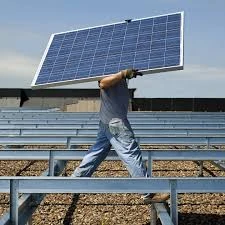Determining the Size of a 150 Watt Solar Panel for Optimal Performance
Understanding the Size of a 150W Solar Panel
Solar energy has become an increasingly popular choice for renewable energy solutions, and understanding the specifications and dimensions of solar panels is crucial for anyone considering investing in them. One of the commonly discussed solar panel ratings is 150 watts, which can provide a good benchmark for residential and small commercial energy needs. In this article, we will explore the size and characteristics of a 150W solar panel, highlighting its practical applications and benefits.
What is a 150W Solar Panel?
A 150W solar panel refers to a panel capable of producing 150 watts of electricity under optimal conditions. This power output is determined by factors such as sunlight intensity, temperature, and the angle at which sunlight strikes the panel. Typically, the power rating of solar panels signifies the maximum energy they can generate in standard testing conditions (STC) which are 1000 watts of solar irradiance per square meter and a cell temperature of 25 degrees Celsius.
Size of a 150W Solar Panel
The actual size of a 150W solar panel can vary based on the manufacturer and the technology used in the panel’s construction. However, on average, a standard 150W solar panel measures approximately 1.2 meters by 0.65 meters (approximately 4 feet by 2.1 feet) and occupies about 0.78 square meters (about 8.4 square feet) of space.
Panels come in various designs, including monocrystalline, polycrystalline, and thin-film types, each of which has different efficiency rates and physical dimensions. For instance, monocrystalline panels are often more efficient and may take up less space to produce the same amount of power compared to polycrystalline panels.
Applications of 150W Solar Panels
The moderate capacity of a 150W solar panel makes it ideal for various applications. This size is typically used in residential installations for energy generation to supplement household energy needs. It's also popular for small off-grid setups, such as powering RVs, boats, or cabins, where less energy is required.
150w solar panel size

For those looking to install a solar system, you might consider the number of panels needed based on your energy consumption. A typical household may require several panels to meet its energy demands, while a smaller setup like an RV may only need one or two.
Benefits of Using 150W Solar Panels
1. Space Efficiency Their relatively compact size allows for easier installation in limited spaces, such as rooftops or small yards, making them suitable for urban environments. 2. Cost-Effectiveness With the lower wattage, 150W panels are often less expensive than their higher-capacity counterparts. This makes them an attractive entry point for those new to solar energy.
3. Versatility These panels can be easily integrated into various systems, from residential solar installations to portable solar chargers for devices.
4. Easy Installation Smaller and lighter panels can be easier to handle and install, reducing labor costs associated with installation.
Conclusion
A 150W solar panel offers a practical and efficient energy solution for various applications, whether for residential use or off-grid scenarios. Understanding the size and characteristics of these panels can help consumers make informed decisions about their energy investments. With growing concerns about climate change and sustainability, renewable energy sources like solar power will undoubtedly play a pivotal role in our energy future, making understanding these technologies even more vital.
Investing in solar energy not only contributes to reducing carbon footprints but can also lead to long-term savings on energy bills, showcasing that smaller systems can indeed make a significant impact. With advancements in technology and increasing availability, solar energy systems have never been more accessible or beneficial.
-
String Solar Inverter: The High-Efficiency Solution for Smart Solar EnergyNewsJul.14,2025
-
Revolutionizing Rooftop Energy with the Power of the Micro Solar InverterNewsJul.14,2025
-
Power Independence with Smart Off Grid Solar Inverter SolutionsNewsJul.14,2025
-
On Grid Solar Inverter: Powering the Future with Smart Grid IntegrationNewsJul.14,2025
-
Monocrystalline Solar Panels: High-Efficiency Power for the Future of Clean EnergyNewsJul.14,2025
-
Bifacial Solar Panel: A Smarter Investment for Next-Generation Energy SystemsNewsJul.14,2025







